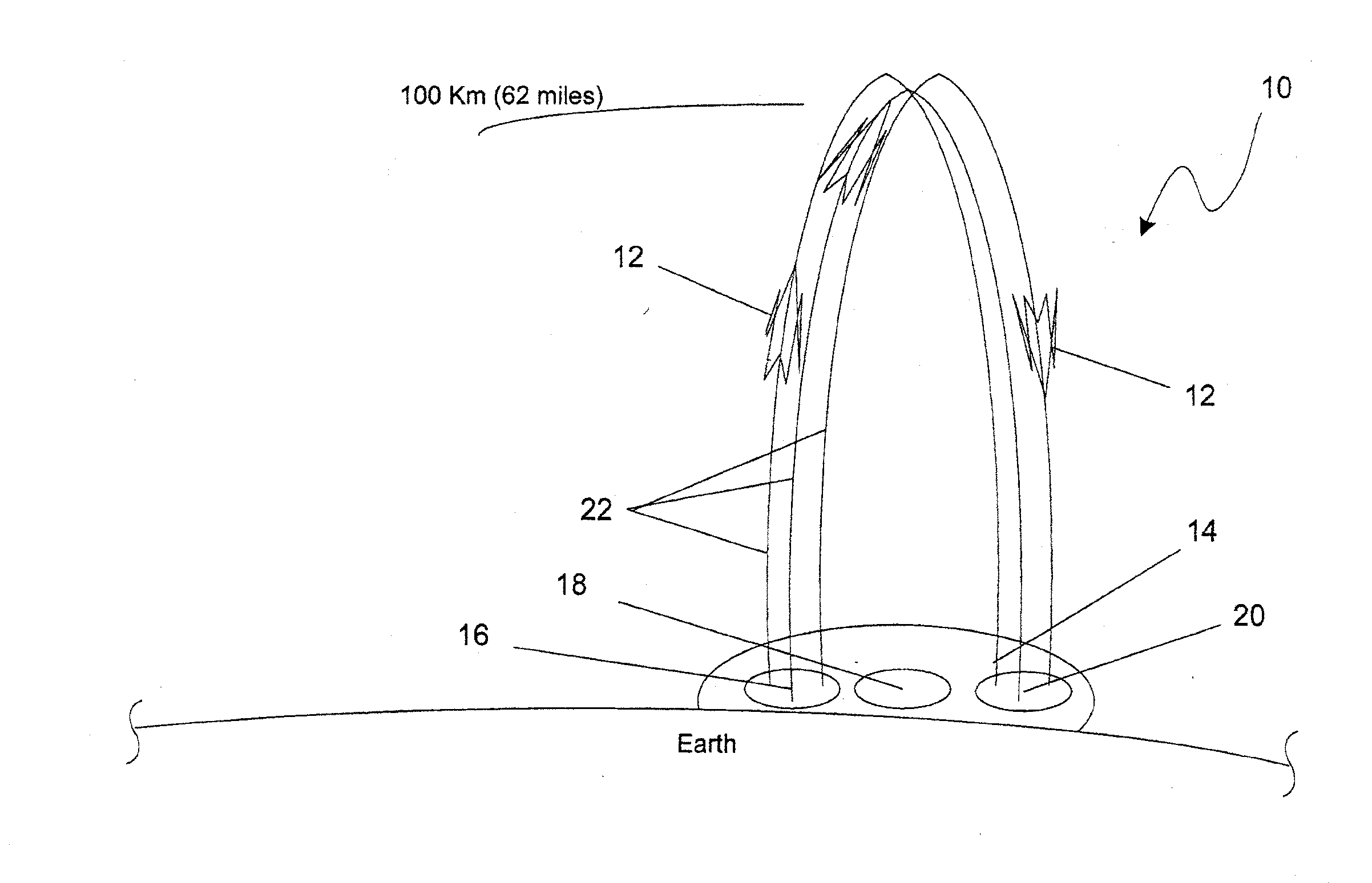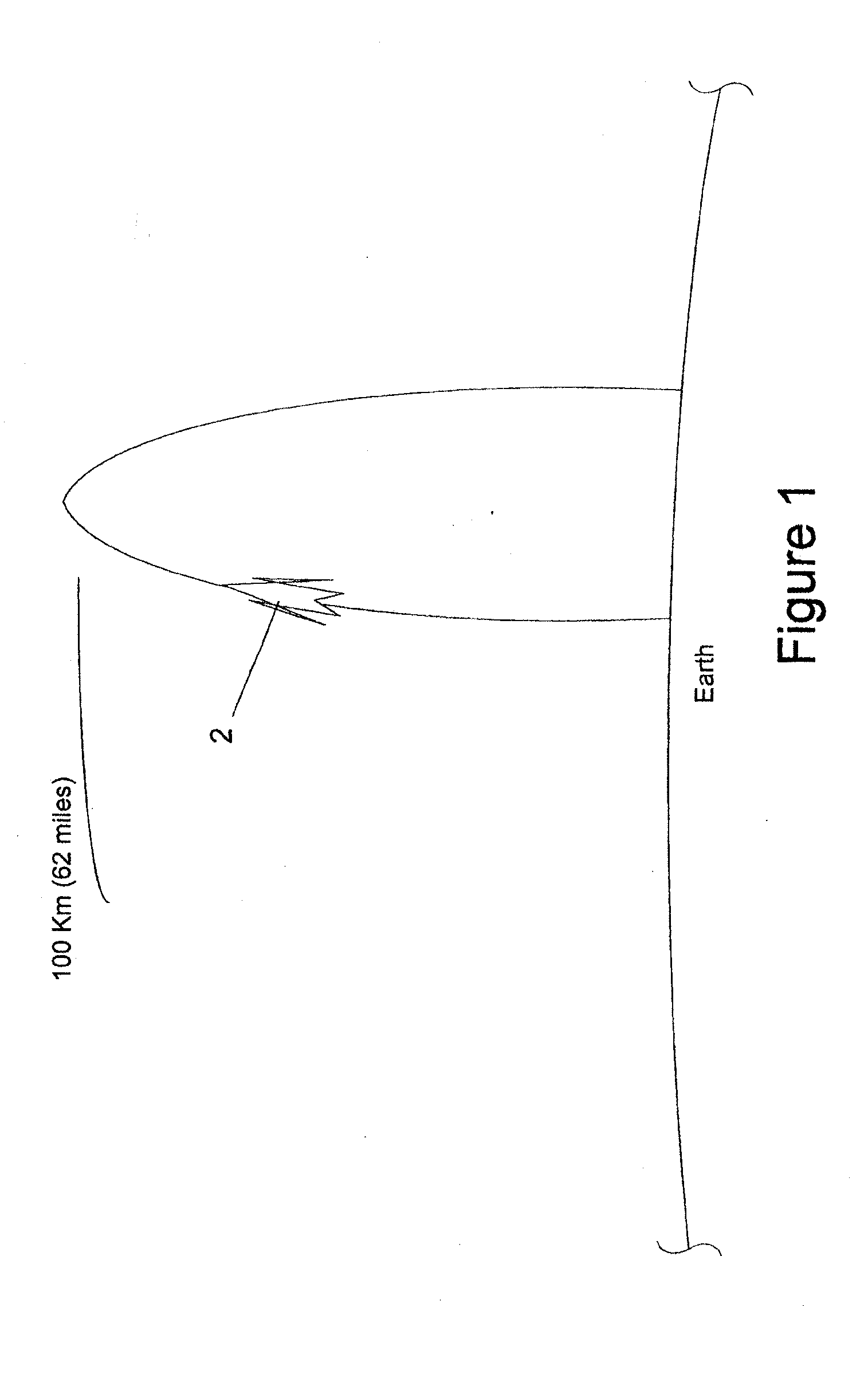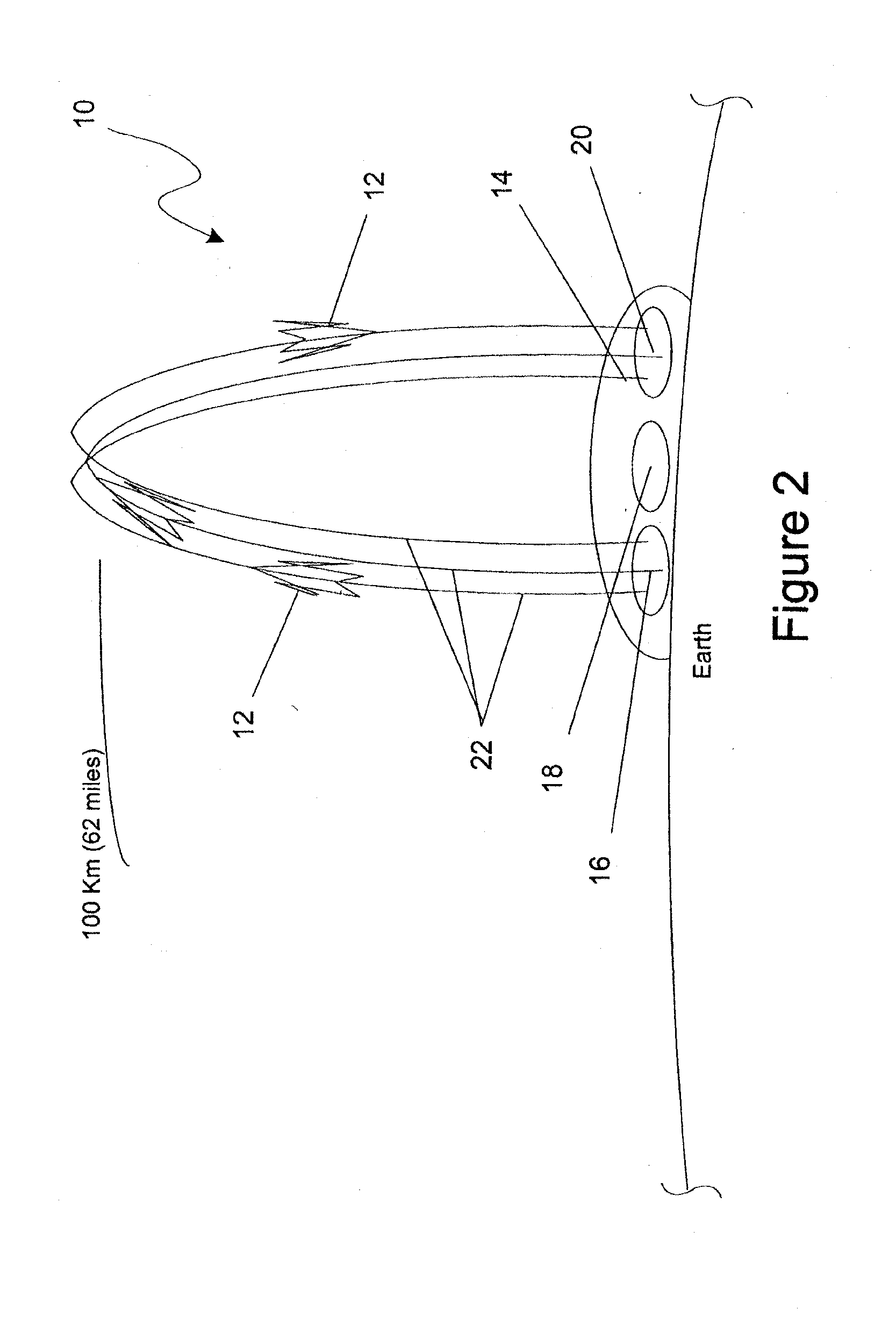Rocket-powered vehicle racing reality system
a reality system and rocket technology, applied in the field of rocket-powered vehicle racing competitions, can solve the problems of not being able to ‘scheduled’ rocket launches, attracted significant sponsorships or media/broadcast rights, and appeal to a limited audien
- Summary
- Abstract
- Description
- Claims
- Application Information
AI Technical Summary
Benefits of technology
Problems solved by technology
Method used
Image
Examples
example rocket -
Example Rocket-Powered Vehicle Competition
[0049]Although multiple embodiments of the present invention describe a preferred minimum height of 100 km, the multiple embodiments of the present invention are not to be construed as limited to this height, rather the multiple embodiments of the present invention can comprise any distance from about 1 km to about 250 km, or any other distance further described herein. In embodiments of the present invention, this distance is preferably from about 255 km to about 200 km and more preferably from about 50 km to about 150 km. Further, the term “rocket” as used throughout the specification and claims is used to maintain simplicity and is intended to include not only rocket-powered vehicles, but also jet-powered and propeller driven vehicles. In addition, disclosures made herein relating to rocket fuel or its components are also intended to include jet fuel, or any other vehicle fuel, and / or their components. Although embodiments of the present ...
example 1
Rocket Powered Vehicle
[0062]Referring now to FIGS. 6 and 8, an example rocket-powered vehicle 12, according to an embodiment of the present invention, is illustrated for use with rocket-powered vehicle competition 10 and the block diagram of FIG. 3. Rocket-powered vehicle 12 is a human-carrying, rocket powered, reusable vehicle, which may include aviation stages (not shown) and is capable of traveling at supersonic speeds. A significant portion of a flight for rocket-powered vehicle 12 should be powered by rocket engines, such as the take-off portion of flight. Each team may provide a document that describes the general nature and configuration of its vehicle, propellants, vehicle non-propellant mass, take-off and landing modes, and its intended flight plans.
[0063]As shown in FIG. 6, rocket-powered vehicle 12 generally comprises vehicle 26, propulsion system 28 comprising propellant 30, and flight system 32. Vehicle 26 is capable of carrying one or more human occupants (not shown) d...
example 2
Spaceport
[0068]Referring now to FIGS. 4, 5 and 5a, spaceport 14 is generally illustrated. In this embodiment of the present invention, spaceport 14 provides a pre-determined location from which rocket-powered vehicles 12 can takeoff and land, and from which spectators may view rocket-powered vehicle competition 10. FIG. 4 is a perspective view of fair and exhibition grounds portion 68 of spaceport 14, which permits spectators to evaluate exhibits and view takeoff and / or landing of rocket-powered vehicles 12 occurring in distant portions of spaceport 14. FIG. 5 is top-view diagram of spaceport 14, and FIG. 5A shows portions of the diagram of FIG. 5. Spaceport 14 may be located in a remote area, such as in the deserts of Nevada and / or New Mexico, in which an exclusive, controlled airspace may be maintained during rocket-powered vehicle competition 10.
[0069]In the embodiment of the invention illustrated in FIG. 5A, spaceport 14 generally comprises launch portion 16, spectator portion 1...
PUM
 Login to View More
Login to View More Abstract
Description
Claims
Application Information
 Login to View More
Login to View More - R&D
- Intellectual Property
- Life Sciences
- Materials
- Tech Scout
- Unparalleled Data Quality
- Higher Quality Content
- 60% Fewer Hallucinations
Browse by: Latest US Patents, China's latest patents, Technical Efficacy Thesaurus, Application Domain, Technology Topic, Popular Technical Reports.
© 2025 PatSnap. All rights reserved.Legal|Privacy policy|Modern Slavery Act Transparency Statement|Sitemap|About US| Contact US: help@patsnap.com



